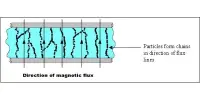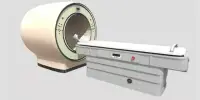Thermoelectric cooling is a fascinating technology, and it definitely has its place when it comes to wine coolers and humidors. This technology has many advantages over conventional vapor-compression cooling systems. It uses the Peltier effect to create a heat flux at the junction of two different types of materials. A Peltier cooler, heater, or thermoelectric heat pump is a solid-state active heat pump which transfers heat from one side of the device to the other, with consumption of electrical energy, depending on the direction of the current. The effect creates a temperature difference by transferring heat between two electrical junctions. Such an instrument is also called a Peltier device, Peltier heat pump, solid-state refrigerator, or thermoelectric cooler (TEC). When the current flows through the junctions of the two conductors, heat is removed at one junction and cooling occurs. It can be used either for heating or for cooling, although in practice the main application is cooling. The cooling effect of any unit using thermoelectric coolers is proportional to the number of coolers used. It can also be used as a temperature controller that either heats or cools.
This technology is far less commonly applied to refrigeration than vapor-compression refrigeration is. The main application of the Peltier effect is cooling. The primary advantages of a Peltier cooler compared to a vapor-compression refrigerator are its lack of moving parts or circulating liquid, very long life, invulnerability to leaks, small size, and flexible shape. However, the Peltier effect can also be used for heating or control of temperature. In every case, a DC voltage is required. Its main disadvantages are high cost for given cooling capacity and poor power efficiency. Thermoelectric cooling units quickly become costly when used in large spaces. This is because you need to add more ceramic plates to cover a larger area, and this will require a higher input voltage to operate. Many researchers and companies are trying to develop Peltier coolers that are cheap and efficient.
So, choose a thermostatic cooler if –
- You’re very concerned about the environment,
- You plan to keep it in a room with steady temperatures year-round,
- Cool or heat for precise temperature control,
- You want exact control over the interior temperature,
- Low operating and maintenance costs.
A Peltier cooler can also be used as a thermoelectric generator. When operated as a cooler, a voltage is applied across the device, and as a result, a difference in temperature will build up between the two sides. When operated as a generator, one side of the device is heated to a temperature greater than the other side, and as a result, a difference in voltage will build up between the two sides (the Seebeck effect). However, a well-designed Peltier cooler will be a mediocre thermoelectric generator and vice versa, due to different design and packaging requirements. It is likely to use TE modules for cooling the indoor air and hence compete with conventional air-conditioning systems.
















